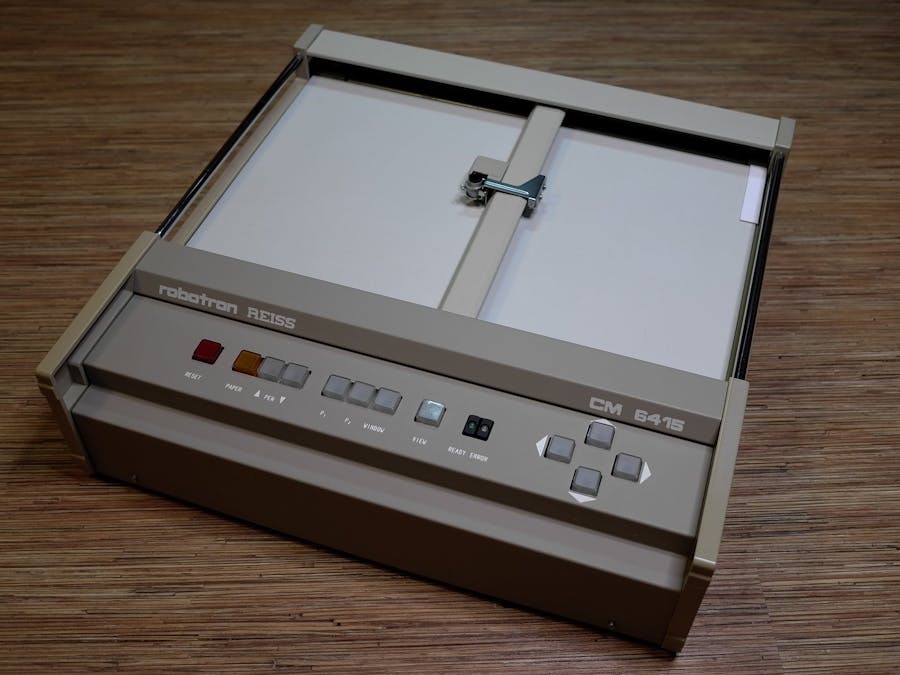Equipping the old-made (but not used) plotter with Bluetooth COM port. Then making the first PCB and case's backplate with it. What for? Why not ordinary printers? It is possible to draw PCB on this plotter, face panel of a case, to mount a laser/mechanical cutter and a mechanical engraver. Drawing area of this plotter is 370x270 mm (3700x2700 steps with 0.1 mm resolution).
This plotter was made in DDR, but didn't work even once since 1989, and was kept in its original package. In 2019 he was powered for the first time and works without any problems.
Some bulged capacitors were on PCBs. All electrolytic capacitors were replaced with new one. No other elements of the plotter looks requiring a repair.
This plotter is very heavy (16 kg), requires a lot of space, smells like warm oil, especially while working. No chance to place it on a table near a home computer, the best idea is to place it in the "far corner". But in this case, some wireless interface is needed.
Here for this plotter was added Bluetooth interface.
The subset of HP-GL this plotter can execute. The bad side is a very small buffer of the plotter - 512 bytes. Was written this very simple Node.js script, it only sends bytes one by one to the COM port once per 0.1 second, and waits for the "free buffer" flag from the plotter, if the "full buffer" flag has received from it.
The HP-GL file can be produced with a dozen programs, such as CAD/CAM, vectorizers, vector graphics editors, etc. First of all - within Inkscape.
The first things made with this renovated plotter were a PCB for the audio amplifier's AC/DC adapter and the backplate for the case of this amplifier.
See "Diary" for details.









_1x_bGT19vVAby.png?auto=compress%2Cformat&w=40&h=40&fit=fillmax&bg=fff&dpr=2)


Comments
Please log in or sign up to comment.